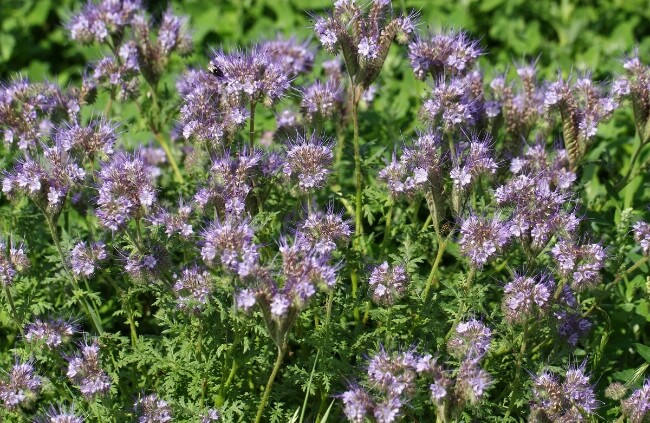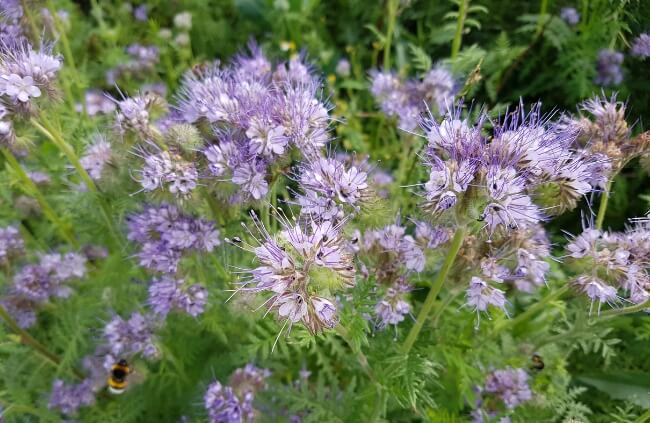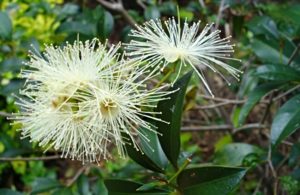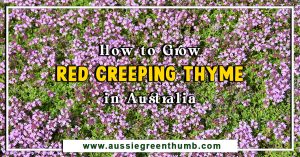Are you looking for a plant that attracts bees and other useful insects to your garden? Well, look no further! Phacelia flowers are like a magnet to beneficial insects and as such provide natural pest control for your garden.
The flowers also look great. An attractive AND useful plant. What more can you ask for? This guide outlines how to plant, grow and care for the two most common species of Phacelia available in Australia – Lacy phacelia and the California bluebell.
More...
Introducing Phacelia Plants
There are two species commonly grown in Australia. These include:

Phacelia tanacetifolia
Phacelia tanacetifolia is also known by the common names Lacy phacelia, Blue Tansy or Purple Tansy. It’s native to Southwestern United States and Mexico. It is commonly found in desert areas there.
They are a bushy, annual, with dark-green, feathery leaves. This beautiful annual grows to a height of between 70 cm to 1 m tall and has very few branches. The Lacy phacelia has fluffy blue-purple flowers and is a heavy nectar producer.
The other common phacelia grown in Australia are California bluebells.

Phacelia campanularia
Phacelia campanularia is also known by the common names desert bells, desert bluebells, and California bluebells. The flowers of California bluebells are bell-shaped and deep blue. Its leaves are dark green and serrated. This annual grows to approximately 40 cm tall.
As compact and sprawling plants, Phacelia campanularia make great container pot plants.
Phacelia Flowers
Phacelia produces enormous amounts of pollen, which attracts useful garden insects like bees, ladybirds, wasps, and hoverflies. Not only are the flowers pretty but they also attract beneficial insects that will help control pests, without the need to resort to pest sprays.
As a result, phacelia isn’t just popular in domestic gardens, and it is often planted by farmers alongside their crop fields. Phacelia is derived from the Greek meaning ‘bundle’ and the plant typically produces an attractive cluster of flowers about 9-12 weeks after sowing. The plants have a relatively long flowering period.
You can deadhead the plant to prolong the flower bloom period. This will also help contain the plant and stop it from spreading to unwanted areas of the garden.
How to Grow Phacelia in Australia
Phacelia are well suited to Australian temperate climate conditions. They do best in areas of Australia with long dry summers and low humidity. As such, they don’t grow as well in subtropical and tropical parts of the country.
They don’t tolerate frost or do well in cold temperatures. They can be grown as a short-lived perennial but are typically grown as annuals.
Ideal Conditions for Growing Phacelia
Where to Position Phacelia in Your Garden
Phacelia likes full sun. While they will tolerate partial shade, they tend to become a bit leggy if not in a sunny position. Lacy phacelia is well known for its ability to attract pollinators.
Many people like to plant Phacelia tanacetifolia near their veggie patch or ornamental gardens. Due to their love of rocky soils, California bluebells are often planted in rockeries, as a border plant, or in wildflower/cottage gardens.
Note that Phacelia can spread so consider growing it in a container pot or contained garden bed.
Best Soil for Phacelia
These plants aren’t fussy when it comes to soil. It grows well in any fertile, well-drained soil. A moist, rocky, and sandy soil is ideal. There also isn’t any real need to add manure, garden compost, or fertiliser.
If the soil is too rich, phacelia will produce a lot of soft growth but fewer flowers.
Propagating Phacelia
Phacelia can be propagated from seed. The best time to sow seeds depends on where you are based in Australia. In cool regions sow seeds from mid-spring to early summer. In temperate areas, it is best to sow phacelia seeds in spring.
Sow seeds about 5-6 mm deep. They need total darkness to germinate so don’t just scatter phacelia seeds on the surface. The seeds take between about 14-28 days to germinate. Thin out and give room to the healthiest seedlings.
Planting the seedlings should be done after the threat of frost has passed. Place them about 20 cm apart to give them sufficient space to spread.
How to Care for Phacelia

There is no need to feed this plant, they don’t need pruning or require much care. They are also generally free from problems with pests and diseases. What a perfect, no-fuss plant!
Make sure to water the plant regularly. It’s important though that the soil is free draining. They don’t like to be drenched or sit in standing water.
When established, Lacy phacelia and California bluebell are fairly low maintenance and reasonably tough. They are somewhat drought tolerant. If you have this plant in a container pot you will need to still water it about once a week.
Phacelia can also be used as a green manure. As the plants finish flowering, simply dig them into the soil.
Now You Know How to Grow Phacelia
Phacelia tanacetifolia and Phacelia campanularia are great plants to grow in Australian temperate gardens. They are relatively drought tolerant and low maintenance.
Some people plant them purely for their looks as ornamental plants. Others use them as a green manure or cover crop. Either way, they are guaranteed to attract pollinators and beneficial insects to your garden and help control pests.
Good luck growing these in your own garden. Contact us if you have any questions about how to grow Phacelia.
Published on August 24, 2023 by Gary Clarke
Last Updated on January 21, 2024




